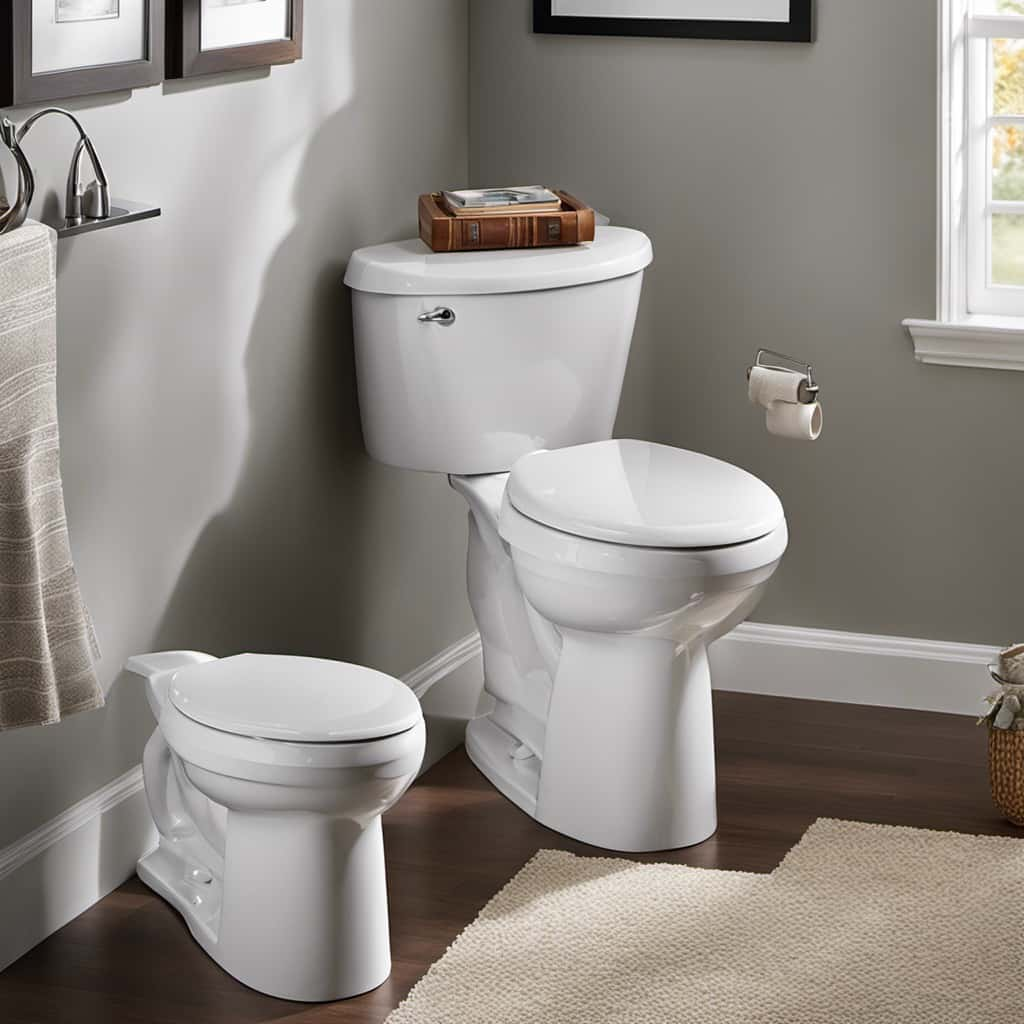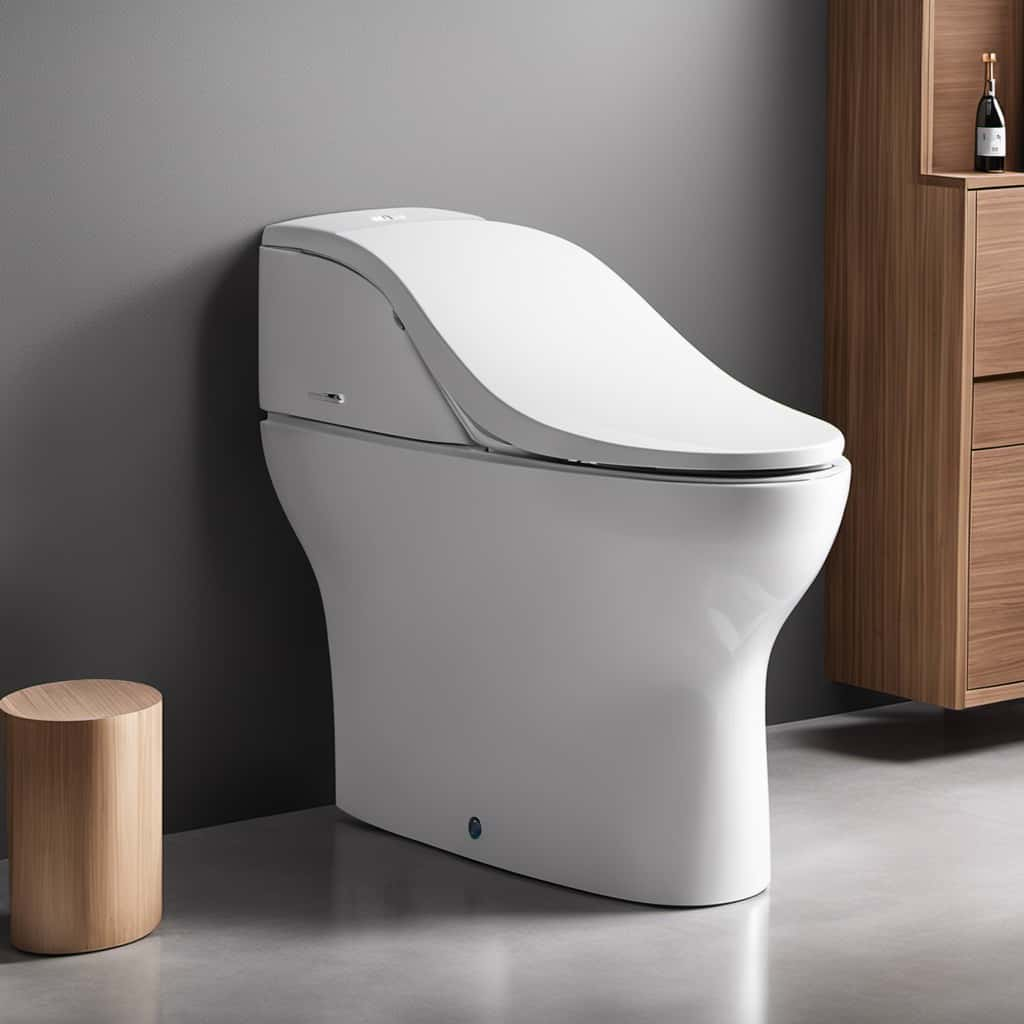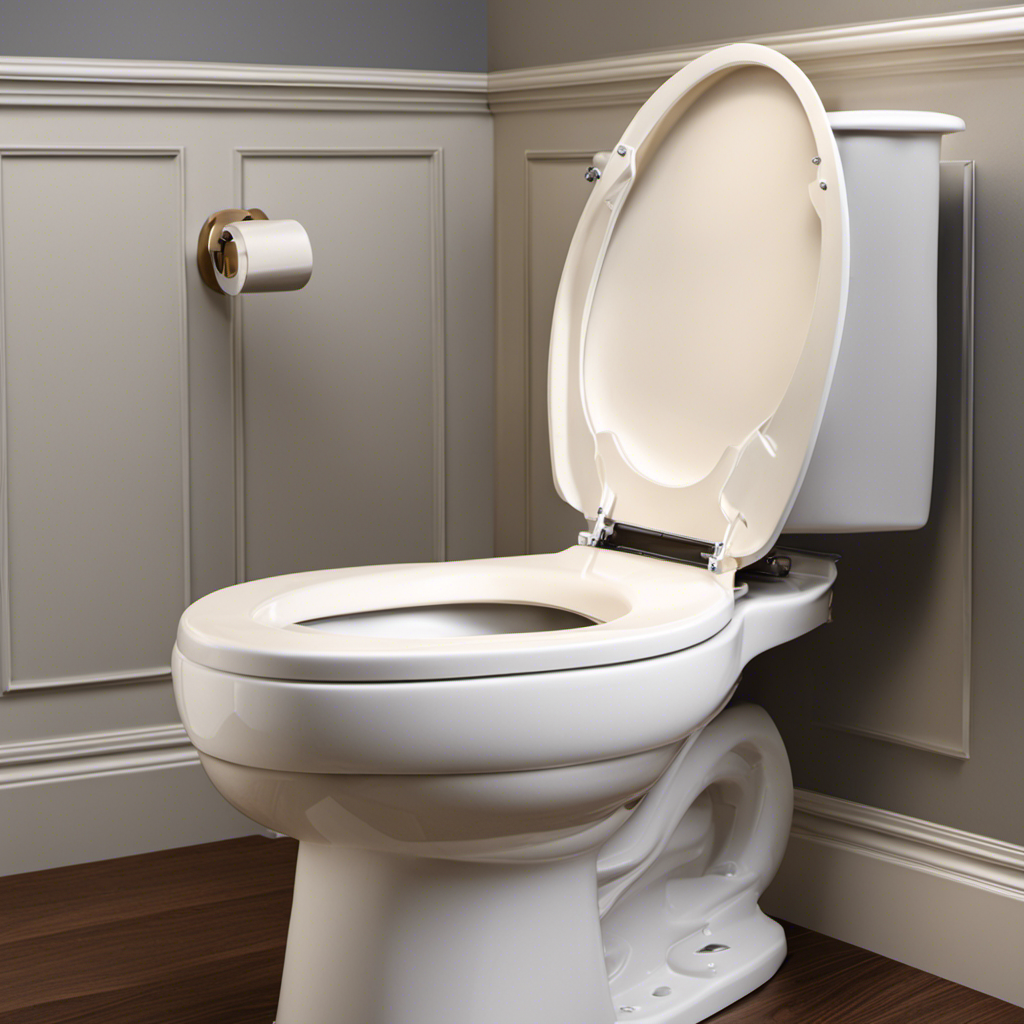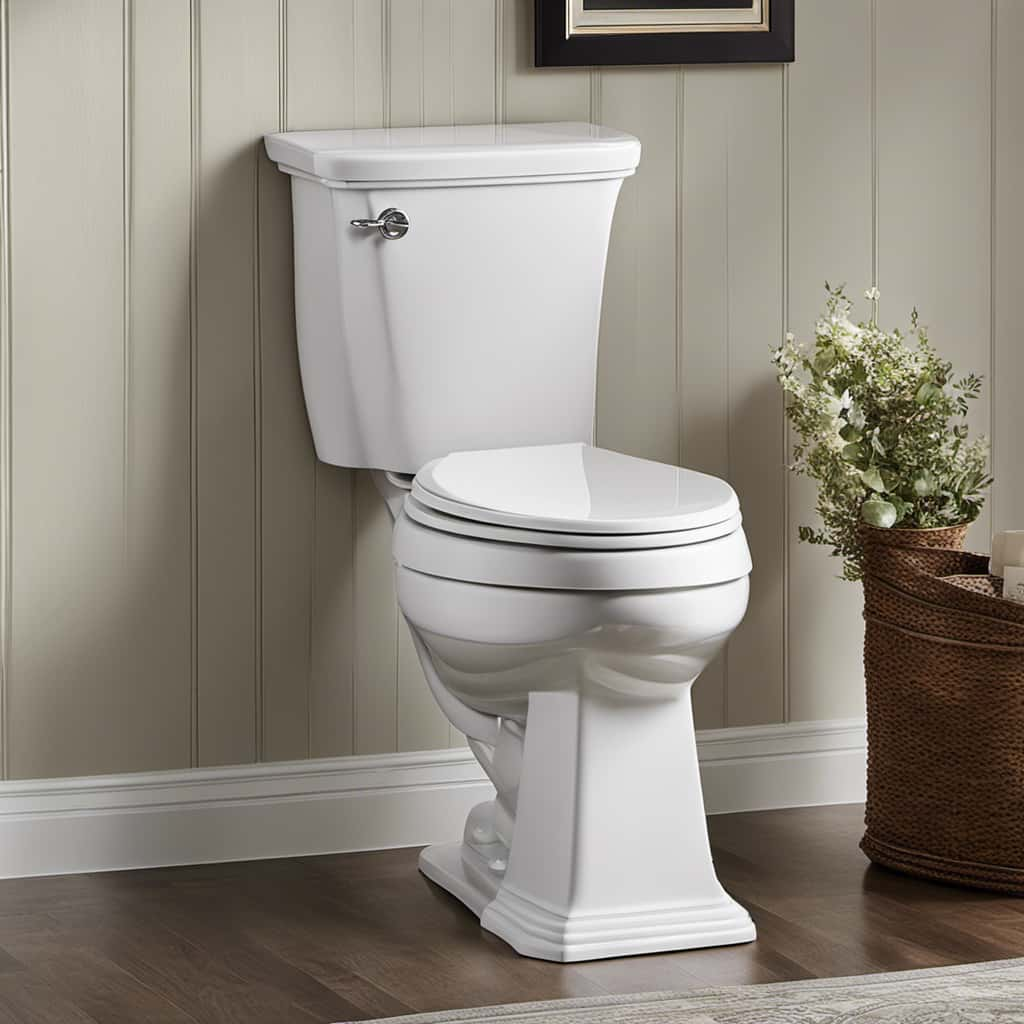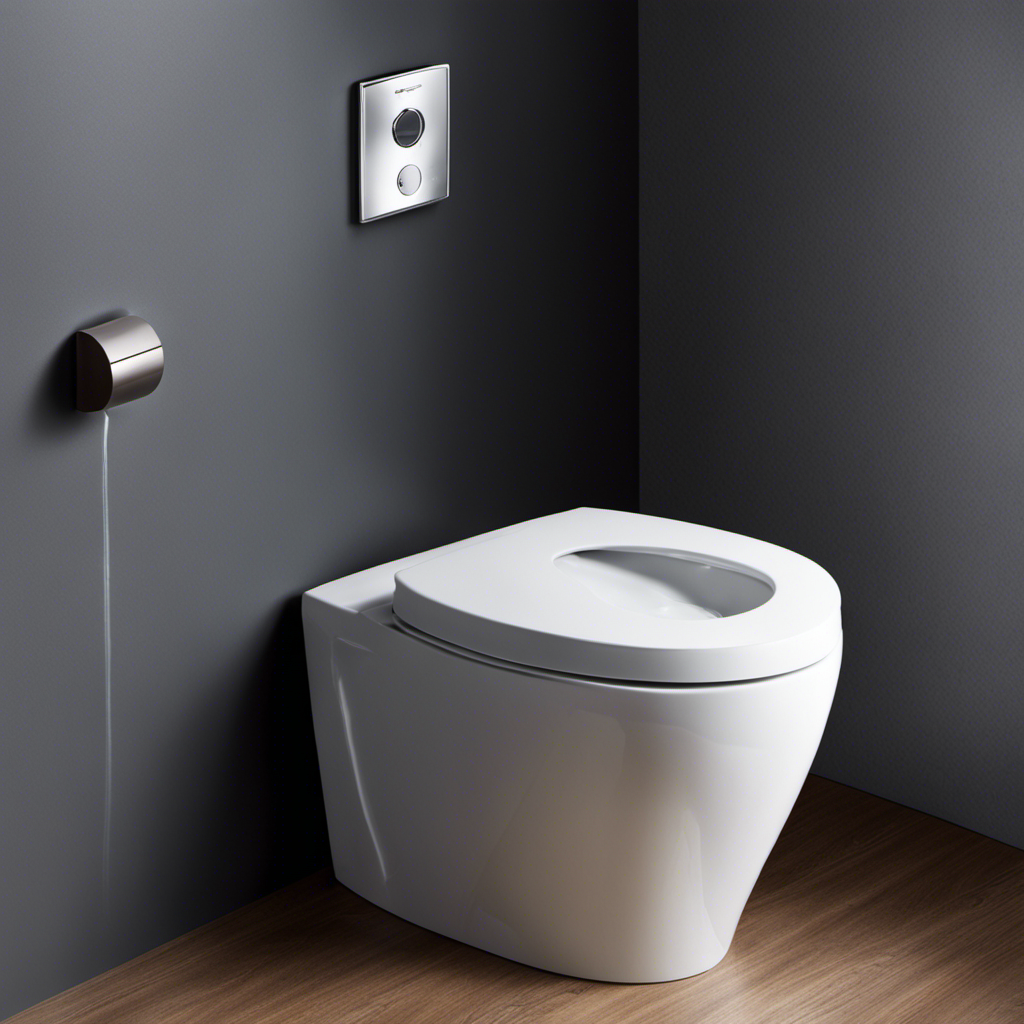Are you tired of dealing with a weak toilet flush that just won’t get the job done? We’ve got you covered.
In this article, we’ll show you how to improve your toilet’s flushing power with a few simple steps. From checking the water level to cleaning the bowl and jets, we’ll guide you through the process of achieving a stronger flush.
Say goodbye to frustration and hello to a toilet that works like a charm. Let’s get started!
Key Takeaways
- Measure water pressure and adjust water supply valve if necessary
- Clean the toilet regularly to remove grime and deposits
- Adjust the flapper chain and replace the flapper valve for proper flushing
- Consider installing a toilet booster pump for increased water pressure and improved flushing performance
Check the Water Level
To improve a weak toilet flush, we start by checking the water level using a simple method. First, measure the water pressure to ensure it’s at the correct level. Low water pressure can result in a weak flush. Use a water pressure gauge and compare the reading to the recommended range provided by the manufacturer. If the water pressure is too low, it may be necessary to adjust the water supply valve or consult a professional plumber.

Next, check for any clogs that may be obstructing the flow of water. Inspect the toilet bowl and jets for any visible blockages. Use a plunger or a toilet auger to remove any debris that may be causing the weak flush.
Once the water level and clogs have been addressed, we can proceed to the next section and learn how to clean the toilet bowl and jets for optimal performance.
Clean the Toilet Bowl and Jets
Now let’s clean the toilet bowl and jets to ensure optimal performance. Proper cleaning techniques can help resolve weak toilet flushes and prevent future issues.
Here are some troubleshooting tips to effectively clean the toilet bowl and jets:
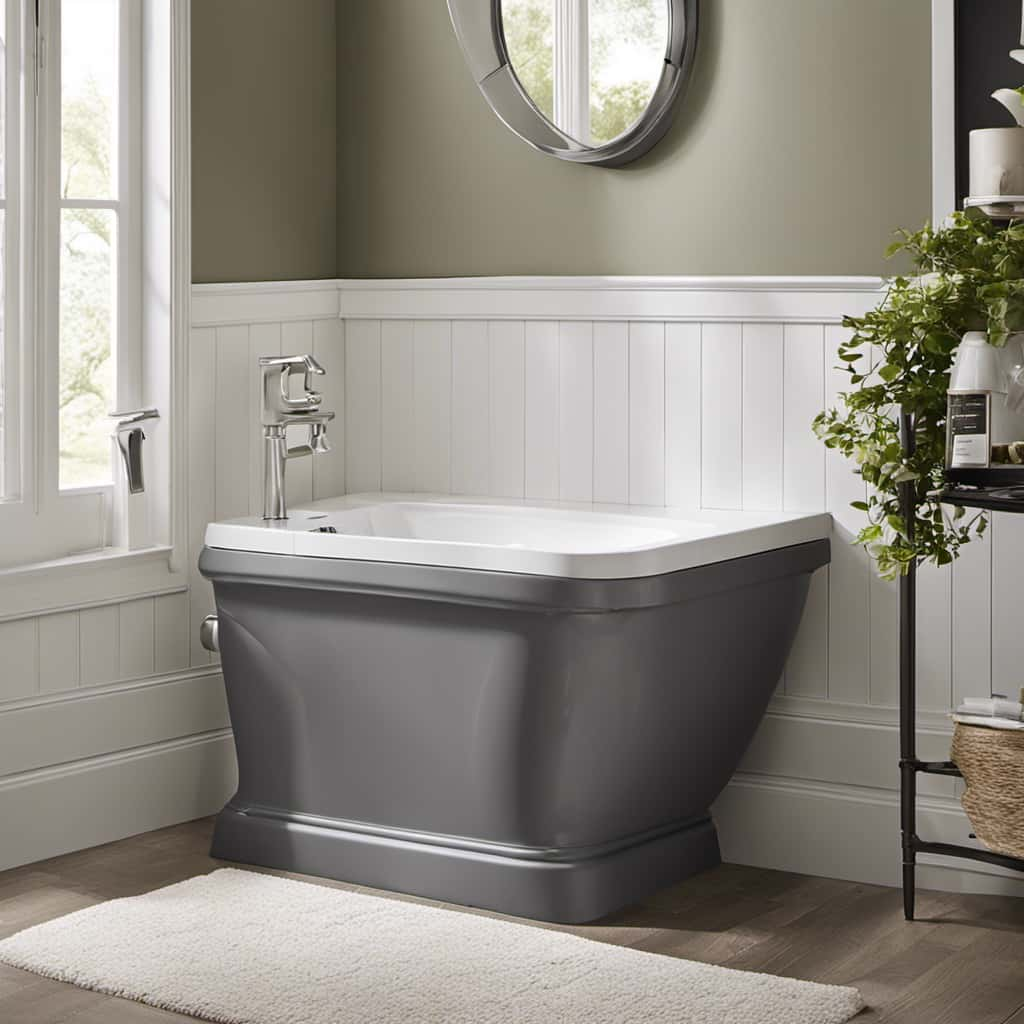
- Use a toilet bowl cleaner: Apply a toilet bowl cleaner and let it sit for a few minutes to break down grime and mineral deposits. Scrub the bowl using a toilet brush to remove any stubborn stains.
- Clean the jets: Jets are small holes under the rim of the toilet bowl that help create a powerful flush. Use a small brush, like a toothbrush, to remove any buildup or debris from the jets. This will improve water flow and increase flushing power.
- Flush with vinegar: Pour a cup of vinegar into the toilet bowl and let it sit for several hours or overnight. The acidic properties of vinegar will help dissolve any mineral buildup in the toilet jets, ensuring a clean and efficient flush.
- Regular maintenance: Keep the toilet bowl and jets clean by implementing a regular cleaning schedule. This will prevent future issues and maintain optimal performance.
Adjust the Flapper Chain
After cleaning the toilet bowl and jets, the next step to improve a weak toilet flush is adjusting the flapper chain. The flapper chain connects the flush handle to the flapper valve, which controls the flow of water from the tank into the bowl. If the chain is too loose, it can prevent the flapper from fully opening, resulting in a weak flush.
To adjust the flapper chain, start by turning off the water supply to the toilet. Then, locate the chain and adjust its length by either tightening or loosening it. Make sure there’s enough slack in the chain for the flapper to fully open and close.
After adjusting the chain, turn the water supply back on and test the flush to see if the water pressure has improved. If not, troubleshooting the fill valve may be necessary.
To transition into the subsequent section about ‘replace the flapper valve’, it’s important to note that if adjusting the flapper chain doesn’t solve the issue of a weak toilet flush, the next step would be to consider replacing the flapper valve.
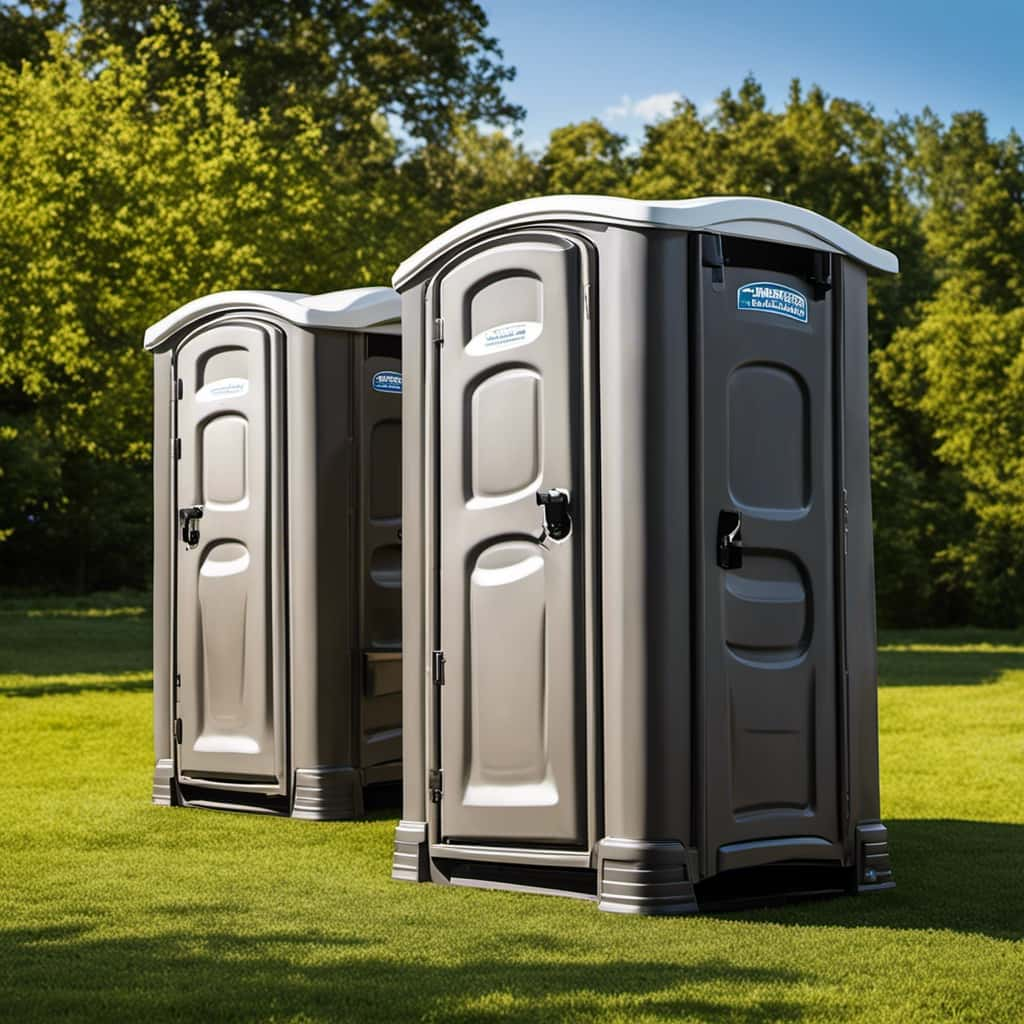
Replace the Flapper Valve
Once the flapper chain has been adjusted, it’s time to replace the flapper valve. The flapper valve is responsible for sealing the toilet tank and allowing water to flow into the bowl during a flush. Over time, the flapper valve can deteriorate or become warped, leading to a weak flush.
Here are four steps to replace the flapper valve:
- Turn off the water supply: Locate the shut-off valve behind the toilet and turn it clockwise to stop the water flow.
- Remove the old flapper valve: Disconnect the flapper chain from the toilet handle and remove the old flapper valve from its seat.
- Install the new flapper valve: Place the new flapper valve onto the seat and secure it tightly.
- Test and adjust: Turn on the water supply and flush the toilet to ensure the flapper valve functions properly. If necessary, adjust the chain length to ensure a proper seal.
Consider Installing a Toilet Booster Pump
To improve a weak toilet flush, we can consider installing a toilet booster pump. A toilet booster pump is a device that increases the water pressure in the toilet tank, resulting in a more powerful flush. This can be particularly beneficial in homes with low water pressure or older plumbing systems.
Here are some benefits of using a toilet booster pump:

- Increased flushing power: A booster pump can improve the flushing performance of a weak toilet, ensuring that waste is effectively removed with each flush.
- Consistent flushing: With a booster pump, you can enjoy consistent flushing performance, regardless of variations in water pressure.
- Water efficiency: Some booster pumps are designed to optimize water usage, reducing the amount of water needed for each flush.
When choosing the right toilet booster pump, consider the following factors:
- Water pressure requirements: Determine the water pressure needed for your toilet and choose a booster pump that can provide sufficient pressure.
- Size and compatibility: Ensure that the booster pump is compatible with your toilet system and can fit in the available space.
- Noise levels: Look for a booster pump that operates quietly to avoid any disruptions.
Frequently Asked Questions
How Can I Determine if the Water Level in My Toilet Is Too Low or Too High?
To determine if the water level in your toilet is too low or too high, you can adjust the flapper chain. By doing so, you’ll have better control over the water level and ensure a more effective flush.
Are There Any Natural Methods to Clean the Toilet Bowl and Jets Without Using Harsh Chemicals?
There are many natural toilet bowl cleaners and DIY toilet jet cleaning methods that don’t require harsh chemicals. These methods are effective and safe for the environment. Let us share our knowledge on this topic.
What Are Some Signs That Indicate the Flapper Chain Needs Adjustment?
To troubleshoot a weak toilet flush, one sign that indicates the flapper chain needs adjustment is if the chain is too loose or too tight. Adjusting the chain can help improve the flushing performance.
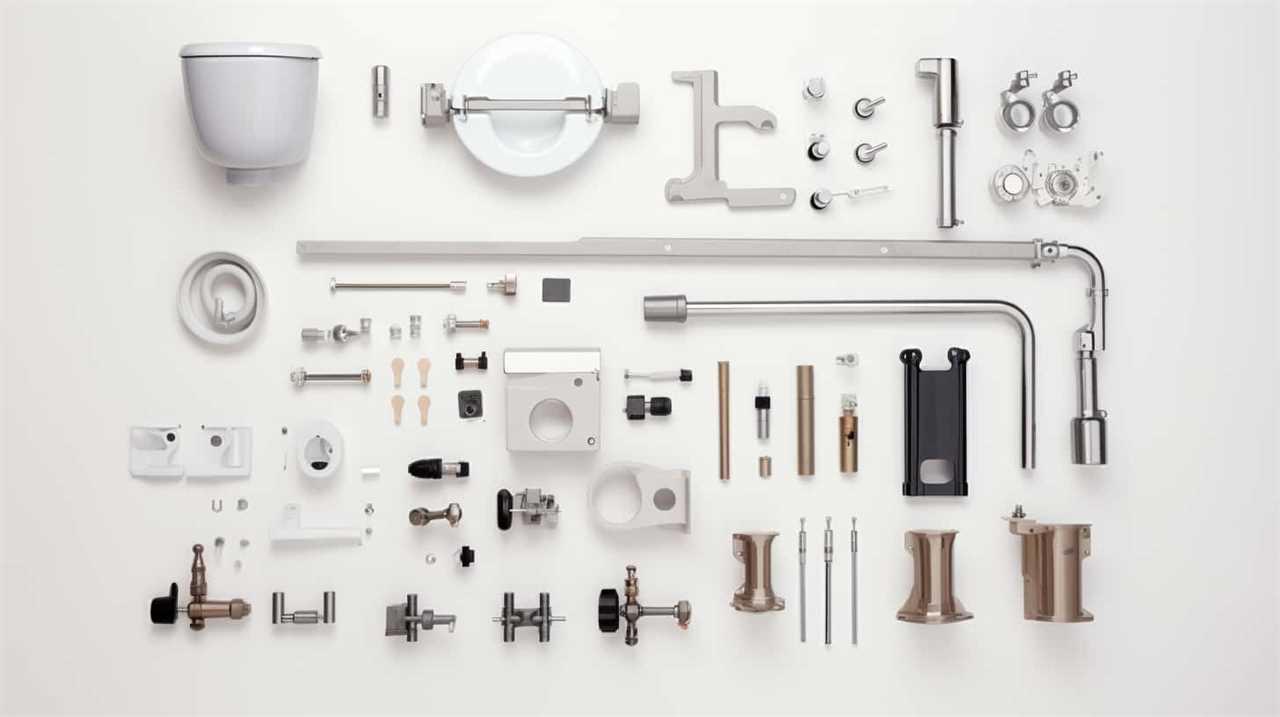
How Often Should the Flapper Valve Be Replaced to Ensure Optimal Performance?
The flapper valve should be replaced every 3-5 years to ensure optimal performance. Alternatively, you can consider upgrading to a dual-flush or pressure-assisted toilet for improved flushing power and efficiency.
What Is a Toilet Booster Pump and How Does It Work to Improve Toilet Flush?
Installing a toilet booster pump can significantly improve toilet flush performance. This device increases water pressure, resulting in a stronger flush. The benefits of a toilet booster pump include improved efficiency and reduced clogs.
Conclusion
In conclusion, by following these simple steps, you can significantly improve a weak toilet flush.
- Maintaining the water level
- Cleaning the toilet bowl and jets regularly
- Adjusting the flapper chain
- Replacing the flapper valve
- If you’re still facing low flushing issues, consider installing a toilet booster pump.
Did you know that a weak flush can waste up to 3 gallons of water per day? Taking action to improve it not only saves water but also ensures a more efficient and reliable toilet system.
